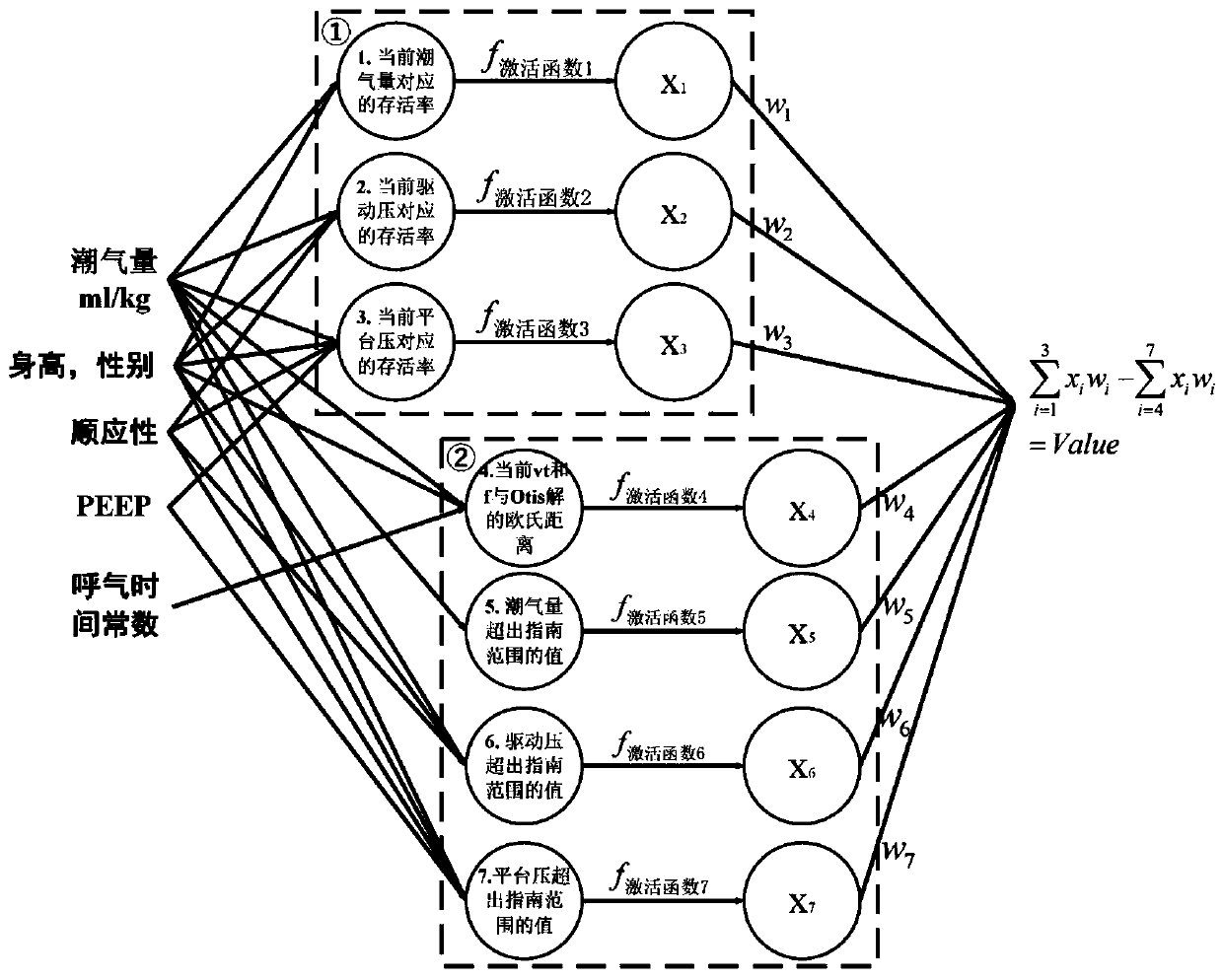Intelligent closed-loop mechanical ventilation control system based on ARDS lung protection strategy and method thereof
A mechanical ventilation and closed-loop control technology, applied in the field of ventilators, can solve the problems of lack of lung protection ventilation strategy trade-off considerations, and achieve the effect of improving the efficiency of ARDS mechanical ventilation and reducing the degree of dependence
- Summary
- Abstract
- Description
- Claims
- Application Information
AI Technical Summary
Problems solved by technology
Method used
Image
Examples
Embodiment 1
[0067] After an ARDS patient is connected to a ventilator, the patient is first mechanically ventilated according to the default parameters of the ventilator. The physiological ventilation parameter sensing subsystem monitors the patient's physiological parameters (SpO 2 , PEEP, FiO 2 , VT, compliance, expiratory time constant) and transmit patient parameters to the intelligent closed-loop control subsystem in real time. After the patient is stable, the optimal combination of mechanical ventilation parameters is calculated according to the intelligent closed-loop control subsystem combined with the patient's height, gender and physiological parameters of the patient. For the intelligent control principle process of the intelligent closed-loop control subsystem, see figure 2 . After the patient is stabilized, through the formula Calculate patient plateau pressure. If the plateau pressure is less than 30cmH 2 O, when the plateau pressure is less than 30cmH 2 Under the p...
Embodiment 2
[0074] The following combines specific examples and image 3 , to explain in detail the method for calculating the optimal tidal volume of the intelligent closed-loop control subsystem in Embodiment 1, see the following description for details:
[0075] Such as image 3 It is a schematic diagram of the optimal tidal volume calculation module. The input part of the optimal tidal volume calculation module includes 6 parameters of VT, height, gender, compliance, PEEP and expiratory time constant. Such as image 3 As shown, the processing of input parameters is divided into two parts. The neuron in the dotted box ① is the reward part: Neuron 1 is the survival rate corresponding to the current tidal volume; Neuron 2 is the survival rate corresponding to the current patient’s driving pressure; Neuron 3 is the survival rate corresponding to the current patient’s plateau pressure. The neuron in the dotted box ② is the penalty part: neuron 4 is the solution of the current patient’s...
PUM
 Login to View More
Login to View More Abstract
Description
Claims
Application Information
 Login to View More
Login to View More - R&D
- Intellectual Property
- Life Sciences
- Materials
- Tech Scout
- Unparalleled Data Quality
- Higher Quality Content
- 60% Fewer Hallucinations
Browse by: Latest US Patents, China's latest patents, Technical Efficacy Thesaurus, Application Domain, Technology Topic, Popular Technical Reports.
© 2025 PatSnap. All rights reserved.Legal|Privacy policy|Modern Slavery Act Transparency Statement|Sitemap|About US| Contact US: help@patsnap.com



